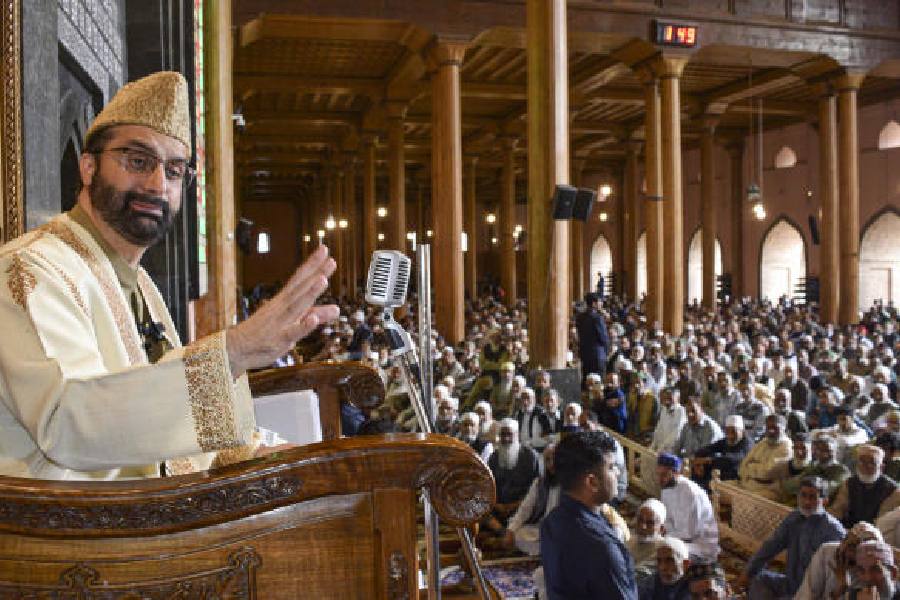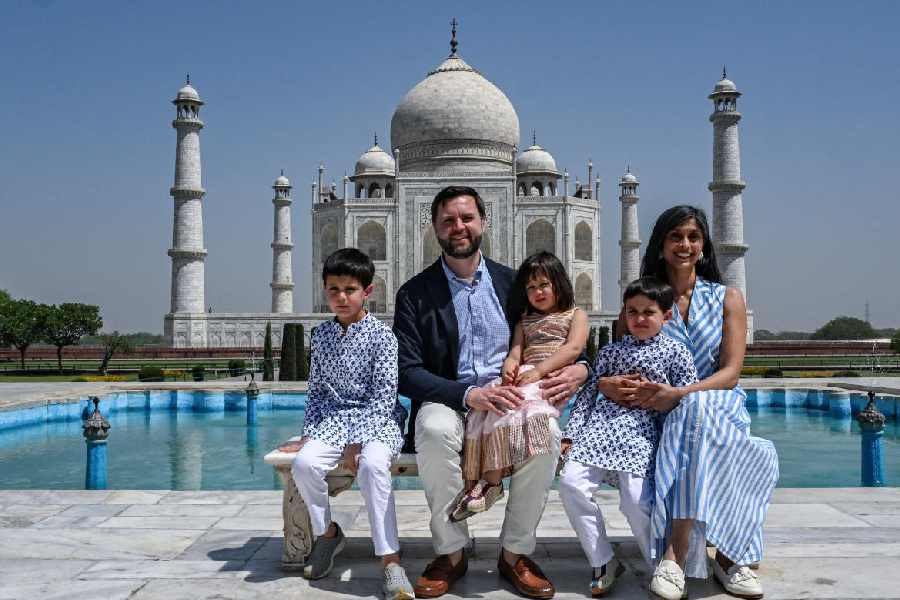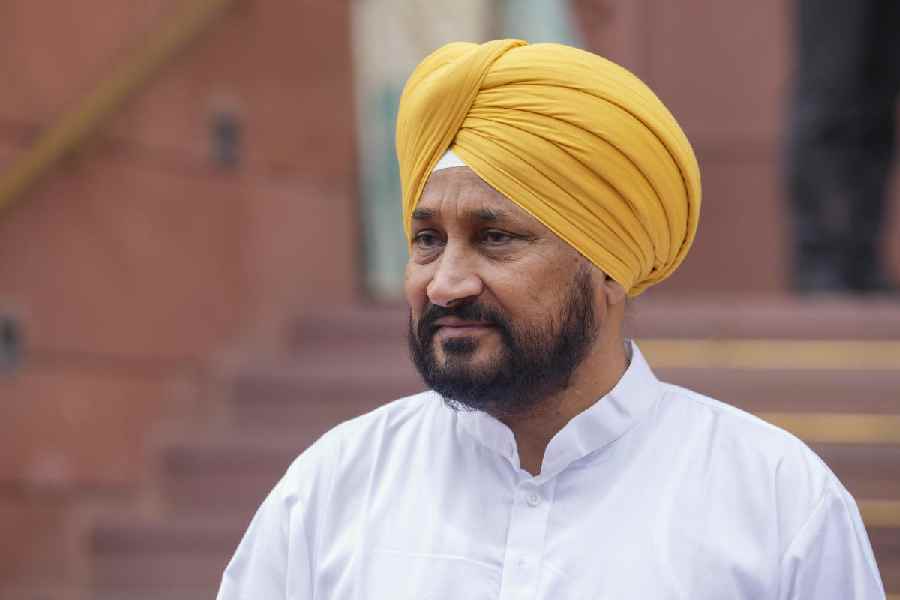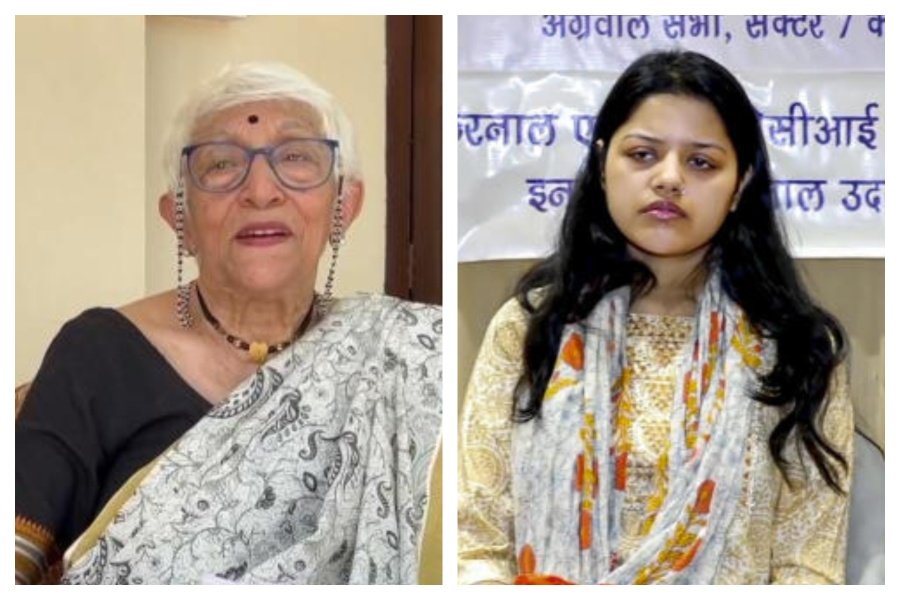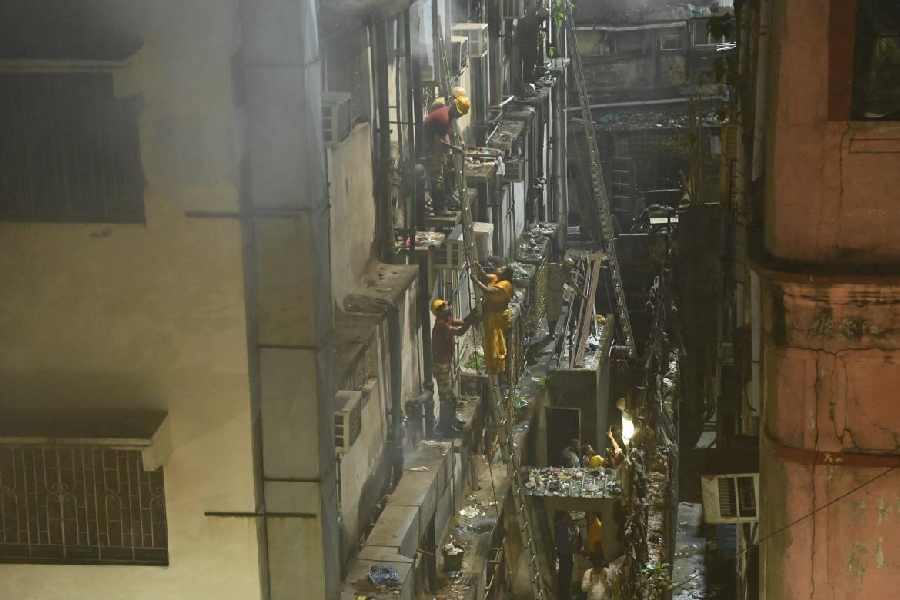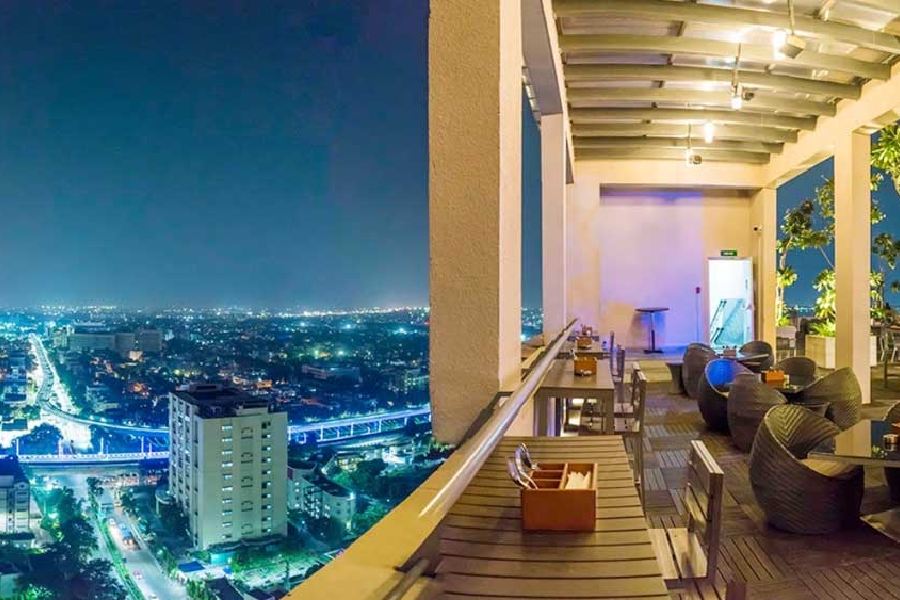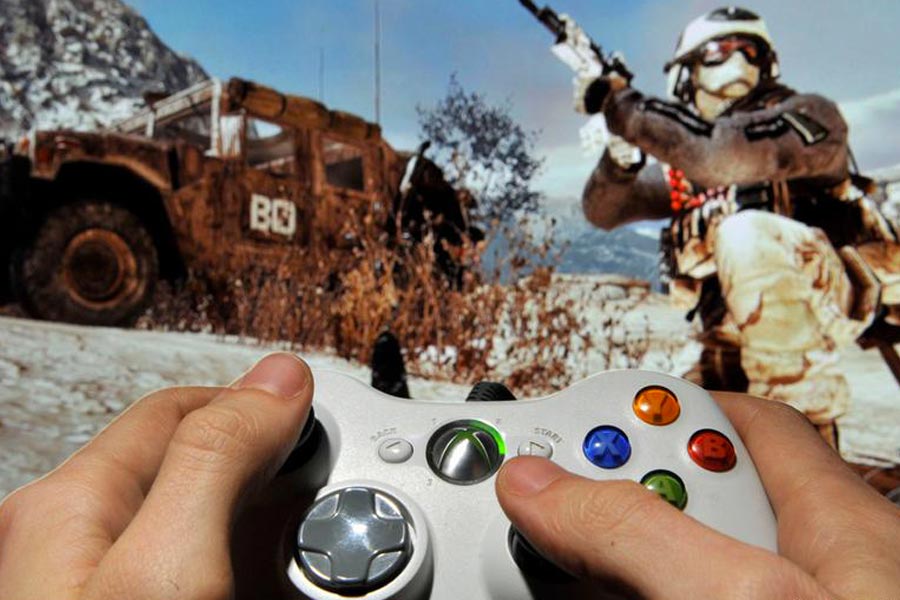
The short video featuring Jawaharlal Nehru - shared widely some weeks ago - cheered the former management executive. As a child and young adult, she'd admired India's first Prime Minister. Lately, though, she had begun to feel that the man who ruled India for 17 years had lost his shine.
The clip showed Nehru sitting with a group of children. He was talking about the need for good cinema for the young. There was much laughter, and Nehru seemed to address them as equals. "The video reassured me that there indeed was a Chacha Nehru," the former executive says. "I had started questioning that, too."
That's not surprising, for Nehru no longer occupies the pedestal that people at large - assisted by successive Congress governments, no doubt - had put him up on. In fact, the clip which emerged on social media sites on November 14 last year was among the few odes to him on his 127th birth anniversary.
"They are pretending that Nehru doesn't exist," rues historian Mridula Mukherjee, referring to the Bharatiya Janata Party- led National Democratic Alliance (NDA) government.
Nehru remains in the shadows as India celebrates the 67th year of the Republic. At the Nehru Memorial and Museum Library (NMML), Vallabhbhai Patel was remembered at a book launch on January 19. Just days before what's known as Children's Day, to mark Nehru's rapport with the young, large cut-outs of Patel - Nehru's deputy in the Cabinet and, in public lore, a rival - were put up in the Capital to mark Patel's birth anniversary.
"The government is trying to disown Nehru and give the impression that Narendra Modi is the person who will carry forward the legacy of Sardar Patel," says senior Congressman and former minister V. Kishore Chandra Deo. "They don't know that Patel and Nehru were good friends. Both were party to decisions and when they had differences, they discussed them freely."
Indeed, the message from the government is clear: Nehru, as far as the NDA is concerned, is just one among many leaders young India had.
"For the first time in 70 years, people like Sardar Patel and B.R. Ambedkar are getting their due," a senior member of the government points out. "The Mount Everest position that a particular family occupied in India has been disturbed."
So it surprised no one when news broke in early December last year that the NMML - which showcases Nehru's life and work - planned to erect a museum to honour all prime ministers.
"A proposal was submitted to the NMML, which was forwarded to the culture mini- stry," says Prasar Bharati chairperson and NMML executive council member A. Surya Prakash, who headed the panel that zeroed in on two sites within the Teen Murti complex, where the NMML is located, for the proposed museum.

The move is symbolic of the widespread belief in the Rashtriya Swayamsevak Sangh (RSS), the BJP's parent body, that Nehru has occupied too exalted a position in modern Indian history, and the time has come to dislodge him.
"History needs to be democratised. Nehru was a scholar and freedom fighter but his contemporaries were no less than him," argues Rakesh Sinha, associate professor at Delhi University and honorary director of the India Policy Foundation, a Sangh-backed think tank. "History has been a prisoner of his charisma and needs to be liberated."
But that is easier said than done. For if there is one leader who is widely toasted for having steered progress in diverse fields, it is Nehru. He set up medical and engineering colleges and business schools, scientific and other research groups, cultural institutes and mammoth industrial hubs and public sector undertakings.
Some are already being dismantled. The Planning Commission was replaced by Niti Aayog on January 1, 2015. The NMML, now headed by retired bureaucrat Shakti Sinha, believed to be close to the present government, is seeing changes, too. November 14 went by unnoticed. On November 26, there was a discussion on "Demonetisation, Democratisation and New Vision of Governance", in association with the Dr Syama Prasad Mookerjee Research Foundation, ideologically close to the ruling dispensation.
That the Planning Commission would be dissolved was made clear in Modi's first Independence Day speech as Prime Minister. He mentioned a large number of nationalist leaders, but Nehru was not among them. A year later, the government ignored Nehru at the India-Africa forum summit - though the visiting leaders praised him. Modi also skipped the September summit of the Non-Aligned Movement, imagined and spearheaded by Nehru.
Outside the government, too, Nehru is being trolled. Rogue Internet sites insist that he was born in a brothel and died of syphilis. An odious video, called Nehru could do anything just to get a girl, focuses on Nehru and women - laughing with Edwina Mountbatten, lighting a cigarette for a lady friend and so on. Nehru's Wikipedia entry was also vandalised.
"History is being rewritten," warns Trinamul Congress MP Saugata Roy.
Some Nehru watchers, however, are convinced that his legacy cannot be undermined that easily. For his most abiding legacy, member of Parliament Mani Shankar Aiyar and historian (and ex-NMML head) Mukherjee stress, is the democratic and political structure that he moulded.
"Nehru made democracy irremovable, irreplaceable and ineluctable," Aiyar says. He talks about an instance - ironic, though - of Nehru's belief in democratic norms. The Rajya Sabha member recalls his first visit to Parliament as a college student to witness a debate initiated by Communist leader S.A. Dange after the Centre overthrew Kerala's first elected Communist government.
"Dange really lit into Nehru, ended by comparing him to Yudhishthira, whose chariot fell because he'd uttered a white lie. He pointed to Nehru and said, your chariot is now falling to the ground. There was no hungama, no slogan shouting from the Congress. Nehru sat quietly listening to him," Aiyar recalls.
Rakesh Sinha agrees that Nehru has his "place" which must be respected. "But now there is a democratic atmosphere for an ob- jective analysis of icons and events. If others are coming into the discourse and being celebrated, that does not mean Nehru is being marginalised."
What it means, a senior RSS member adds, is that there will be celebrations of leaders such as Deendayal Upadhyaya, Ram Manohar Lohia and M.S. Golwalkar. Swami Vivekananda will be remembered, as will A.P.J. Abdul Kalam. For the coming elections in Punjab, the focus will be on Bhagat Singh.
"Nehru is not relevant to the present generation," the RSS leader holds. "Society has changed; our heroes have also changed."
But it is not going to be easy to erase, or even dilute, Nehru because contemporary accounts are peppered with endearing accounts of the man. Former governor Gopalkrishna Gandhi writes about an incident narrated by Lal Bahadur Shastri in 1959.
During the 1937 elections, the two Congressmen were campaigning in Allahabad district. Nehru was hungry because the Mirzapur unit had not given him any tea. So they filled their stomachs at a railway station teashop, and then realised they didn't have enough money. Nehru was carrying a rupee and a quarter.
Historian Irfan Habib remembers another incident. After his rejection of the Cripps Mission - which was the British government's move to enlist Indian support in World War II - Nehru was touring UP. He was in Aligarh one day and feeling hungry because his hosts hadn't given him lunch. So he demanded to be taken to Habib's father, a professor.
"...We found Nehru arriving by tonga, getting down, breaking into the house, practically shouting 'Habib, Habib, get me an omelette.'... My father told him, 'Pandit ji, why did you reject the Cripps proposals; we would have had at least hopes of becoming a dominion.' Nehru, looking scornfully at my father, said, 'Habib, you are just a professor. Within five years this country will be free.' And indeed it took five-and-a-half years. This perhaps tells us something of the indomitable optimism of the man," Irfan Habib states in a 2014 talk on Nehru and the National Movement, held to mark Nehru's 125th anniversary.
Not everybody, however, sees Nehru in the same light. Sinha believes that he had a "highly blinkered" social philosophy. "The first government after independence of any country has the onerous responsibility of inaugurating a new era. But as far India was concerned, it was more a transfer of power than a transformation of political culture and social philosophy."
But are there new claimants for the space that Nehru occupied? A waistcoat does not make a man, but it can mark a beginning. A sleeveless jacket worn mostly over kurtas - for long years known as the Nehru jacket - is now Modi's sartorial trademark.
"Pandit ji, on your birthday, I have started your unfinished work," Modi said in Ghazipur in Uttar Pradesh in what many thought was an election speech on November 14. "No one would have paid a bigger homage to you than this."
Internationally, too, the PM is making friends and influencing people, quite like Nehru did in the Fifties. If Nehru hobnobbed with Tito, Sukarno and Nasser, Modi has his own band of friends - Abe and Barack, among them, and who knows when Donald will join the ranks? He hasn't started hugging toddlers (although he has been noticed pulling at their ears on occasion). But it's early days yet.


